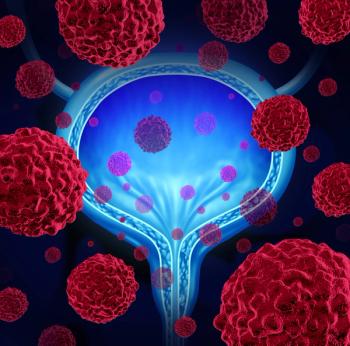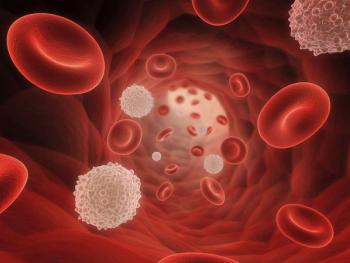
SCLC Prognosis Remains ‘Unsatisfactory’ Despite Numerous Treatment Options
There is a clear need for further trials and drug development to mitigate poor outcomes in patients with small cell lung cancer, according to an expert from Yale School of Medicine.
High unmet needs and ‘unsatisfactory’ outcomes continue to affect patients with small cell lung cancer (SCLC) despite a large number of available therapies in the space, according to a European study published in BMJ Open.
In the frontline setting, investigators reported a median overall survival (OS) among patients with limited-stage SCLC (LS-SCLC) of 17.3 months (95% CI, 13.8-19.6). Moreover, median OS was 8.8 months (95% CI, 8.2-9.3) for those with extensive-stage SCLC (ES-SCLC). Median progression-free survival (PFS) was 11.6 months (95% CI, 10.1-12.9) among those with LS-SCLC and 6.1 months (95% CI, 5.4-6.6) among those with ES-SCLC.
Median OS in patients initiating second-line treatment was 6.6 months (95% CI, 5.3-7.6). Patients initially diagnosed with ES-SCLC had a median OS of 5.1 months (95% CI, 4.4-5.5) from the start of second-line treatment vs 9.3 months (95% CI, 8.3-11.5) among those initially diagnosed with LS-SCLC (P <.0001).
Moreover, these findings are consistent with outcomes observed in the United States, according to Robert Matera, MD, and Anne Chiang, MD, PhD, neither of whom were authors on the study.
“The number and clinical effectiveness of treatment options for [SCLC] lags far behind that of non–small cell lung cancer, which has seen an explosion of targetable pathways and better responses to immunotherapy,” they said in a comment to CancerNetwork®. “Despite recent advances, the prognosis of [SCLC] remains the worst of any lung cancer subgroup. The reason for this poor prognosis is multifactorial; however, a dearth of predictive and prognostic biomarkers remains a large unmet need.”
Chiang is an associate professor of medicine and Associate Cancer Center Director of Clinical Initiatives and Matera is a clinical fellow at the Yale School of Medicine.
This non-interventional, retrospective cohort study included 231 patients with LS-SCLC, 308 with ES-SCLC in the frontline setting, and 225 with relapsed/refractory SCLC who initiated second-line treatment, 198 of whom were included in one of the frontline groups. The study included patients from 3 European countries: 292 from France, 199 from Italy, and 273 from the United Kingdom.
Male patients comprised anywhere from 56.8% to 68.5% of the assessed subgroups, although female patients accounted for 61.1% of the total sample from the United Kingdom. The mean age at time of diagnosis was 66.0 years (standard deviation [SD], 9.2) among those with LS-SCLC and 65.4 years (SD, 9.2) among those with ES-NSCLC receiving frontline treatment, and the mean age was 63.7 years (SD, 8.7) in the second-line treatment groups overall.
Anywhere from 54.1% to 60.0% of patients in all groups were current smokers at diagnosis and approximately 68% to 70% of patients had at least 1 comorbidity. The average patient had comorbidities affecting 1 or more organ systems.
In the frontline LS-SCLC group, 76.2% received chemotherapy with radiotherapy, and 72.7% received chemotherapy plus thoracic radiotherapy. Very few patients in this group had surgery (2.6%) or received radiotherapy alone (2.2%).
Most (58.4%) in the frontline ES-SCLC group underwent treatment with chemotherapy alone, and 39.3% received chemotherapy plus radiotherapy, with thoracic radiation being the most frequently used (21.4%). No patients in this group had surgery, and 1.3% received only radiotherapy.
In the frontline, LS-SCLC group, 16.9% and 16.0% of patients, respectively, received concurrent or sequential chemotherapy plus thoracic radiotherapy and prophylactic cranial irradiation (PCI). Moreover, sequential use was more common in patients with ES-SCLC than concurrent use for chemotherapy, thoracic radiotherapy.
Most patients initiating a second-line therapy received chemotherapy alone (79.6%). None of these patients underwent surgery as part of second-line therapy, and only 6 received PCI in this setting.
“While there is no data to quantify [this], it has been our experience that irinotecan is used more commonly in Europe as part of a chemotherapy backbone, whereas United States physicians typically favor carboplatin or cisplatin,” Matera and Chiang wrote. “It is unclear if this would significantly affect outcomes in any way.”
Investigators derived these data using a retrospective chart review approach, including only information reported during routine clinical practice. As such, ECOG data were unavailable for around 40% of patients, and the study was further limited by the possible absence of other key clinical variables. The lack of standardization across countries and practices may have also affected these data.
“This study effectively highlights the devastating mortality of [SCLC] and lack of effective treatment options,” Matera and Chiang concluded. “The ‘real-world’ cohort shows that patient outcomes are likely even worse than accepted norms established by large trials. Despite recent advances adding immunotherapy to chemotherapy in the frontline setting, the median [OS] remains at about 1 year, the worst of any lung cancer subtype. There is a clear need for further trials and drug development to combat these poor outcomes.”
Reference
Blackhall F, Girard N, Livartowski A, et al. Treatment patterns and outcomes among patients with small-cell lung cancer (SCLC) in Europe: a retrospective cohort study. BMJ Open. Published online February 6, 2023. doi:10.1136/bmjopen-2021-052556
Newsletter
Stay up to date on recent advances in the multidisciplinary approach to cancer.

















































































